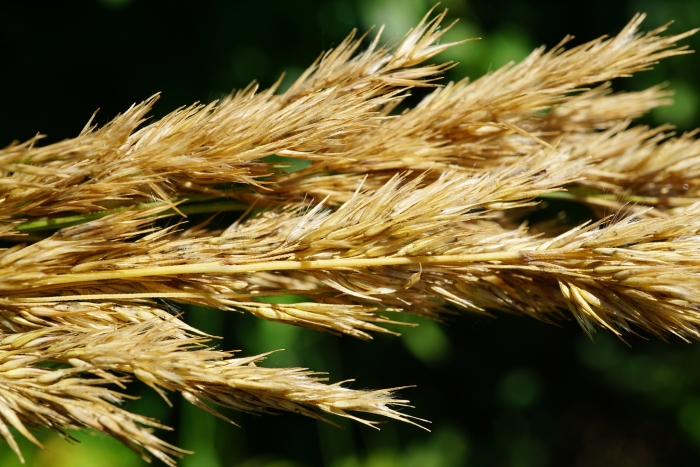Wood Small-Reed
(Calamagrostis epigeios)
Wood Small-Reed (Calamagrostis epigeios)
/
/

Patrick Hacker
CC BY 4.0
Image By:
Patrick Hacker
Recorded By:
Copyright:
CC BY 4.0
Copyright Notice:
Photo by: Patrick Hacker | License Type: CC BY 4.0 | License URL: http://creativecommons.org/licenses/by/4.0/ | Rights Holder: Patrick Hacker | Publisher: iNaturalist | Date Created: 2020-08-12T15:05:47-07:00 |

























Estimated Native Range
Summary
Calamagrostis epigeios, commonly known as wood small-reed or bushgrass, is a perennial grass native to a variety of habitats in Eurasia and Africa, including open woodlands, forest edges, and riparian zones. It is also found in disturbed areas, which may include roadsides and abandoned fields. This species typically grows to a height of 24-79 inches (60-200 cm) with a similar spread due to its vigorous rhizome system. The foliage is medium green, and the plant forms dense clumps of erect culms. The leaf blades are long and narrow, measuring up to 28 inches (71 cm) in length and 0.12-0.55 inches (3-14 mm) in width. The ligule is 0.16-0.47 inches (4-12 mm) long, acute, and lacerate. The plant produces an erect, feathery panicle that is 5.9-11 inches (15-28 cm) long, which is less showy than some ornamental grasses but adds a delicate texture to the landscape.
Wood small-reed is valued for its ability to stabilize soil and is often used for erosion control. It can also be used in naturalistic plantings and as a tall ground cover in large areas. In cultivation, it prefers full sun to part shade and can tolerate a range of soil types, provided they are well-drained. It is relatively low maintenance but may require division every few years to manage its spread. While it is not known for significant pest or disease issues, its aggressive growth can be a problem if not managed properly. In some regions, Calamagrostis epigeios is considered potentially invasive, so it is important to check local regulations before planting it outside its native range.CC BY-SA 4.0
Wood small-reed is valued for its ability to stabilize soil and is often used for erosion control. It can also be used in naturalistic plantings and as a tall ground cover in large areas. In cultivation, it prefers full sun to part shade and can tolerate a range of soil types, provided they are well-drained. It is relatively low maintenance but may require division every few years to manage its spread. While it is not known for significant pest or disease issues, its aggressive growth can be a problem if not managed properly. In some regions, Calamagrostis epigeios is considered potentially invasive, so it is important to check local regulations before planting it outside its native range.CC BY-SA 4.0
Plant Description
- Plant Type: Grass
- Height: 3-6 feet
- Width: 2-3 feet
- Growth Rate: Moderate
- Flower Color: N/A
- Flowering Season: Summer
- Leaf Retention: Deciduous
Growth Requirements
- Sun: Full Sun, Part Shade
- Water: Medium
- Drainage: Medium
Common Uses
Erosion Control, Low Maintenance
Natural Habitat
Native to open woodlands, forest edges, riparian zones, and disturbed areas in Eurasia and Africa
Other Names
Common Names: Bushgrass
Scientific Names: , Calamagrostis epigeios,
GBIF Accepted Name: